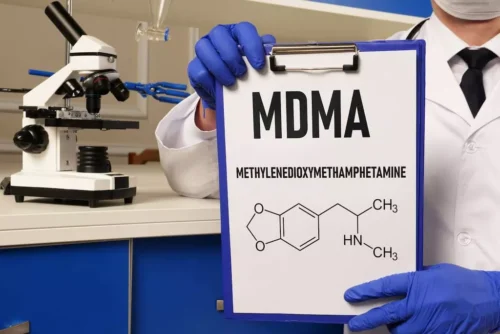- Have any questions?
- +91 9818467736
- medicaresolutions2015@gmail.com
The 3 Stages of Alcoholism Alcohol Addiction Explained
Alcohol Consumption during the COVID-19 Pandemic: A Cross-Sectional Survey of US Adults
November 17, 2021Python Developer обовязки, зарплатня, вимоги до спеціаліста
February 7, 2022The 3 Stages of Alcoholism Alcohol Addiction Explained

AAC operates numerous respected treatment facilities across the nation, offering a wide array of evidence-based treatment solutions to individuals struggling with different forms of AUD. You can immediately contact one of their 24/7 helplines for alcohol addiction and receive first-hand information from their caring and devoted operators. This way, you’ll become aware of the available rehab facilities while receiving expert advice on how to choose the most appropriate one for your current situation. During end-stage alcoholism, some people may develop involuntary rapid eye movement (nystagmus) or a thiamin (vitamin B1) deficiency that results in weakness or paralysis of the eye muscles. This can also play a role in the development of alcoholic dementia. Visible signs of alcoholism may become apparent during middle-stage alcoholism.

You deserve high-quality treatment and a fulfilling life in recovery.
- Identifying problems with alcohol early can help prevent dependence and addiction.
- A luxury center treating addiction and co-occurring mental health with evidence-based therapies, a continuum of care in bespoke facilities, and private bedrooms.
- While end-stage diseases are normally terminal, there is no clinically recognized condition called end-stage alcoholism.
Death is usually caused by a combination of internal bleeding and a buildup of toxins within the body and can include seizures and/or cardiac arrest. Unlike an opioid overdose death that can happen in a matter of minutes, dying from end-stage alcoholism is usually slow, painful and undignified. There’s often a notable lack of compassion for people who are dying from alcohol use disorder among caregivers, family members and the general public. Because of the severity of the disease, medically monitored alcohol detox is a necessity. Between 3 and 5 percent of people withdrawing from alcohol develop grand mal seizures and severe confusion, known as delirium tremens.
The Stages of Alcoholism: Early, Chronic, and End Stage
Late-stage, or end-stage alcoholism, is a full-blown addiction to alcohol, often with damaging physical and mental health effects. Alcohol detox and treatment are nearly always necessary at this stage. The health complications that come with end-stage alcoholism increase the likelihood of death.

Addiction and mental health therapy tailored to your needs
- Alcohol keeps people from reaching the deep, restorative stages of sleep.
- Design for Recovery offers the skills and support for lifelong sobriety.
- Later, it can cause fatigue, bleeding and bruising, itchy skin, yellow discoloration of the skin and eyes and fluid accumulation in the abdomen known as ascites.
- Alcoholism often starts as just having a little bit of fun—but without controlling the amount and frequency it’s consumed, it can quickly progress to addiction.
Daily drinking can have serious consequences for a person’s health, both in the short- and long-term. Many of the effects of drinking every day can be reversed through early intervention. Visit the following websites to five stages of drinking learn about The Recovery Village’s network of rehabilitation facilities. Each center is ready to help people learn how to cope with their Ambien addiction and uncover the root causes for their substance use disorder.

Alcohol use disorder kills 1 out of every 10 adults aged 20-64, making alcoholism more deadly than automobile crashes, opioid abuse and gun violence combined. While the way alcohol impacts your body varies based on your weight, age, gender and genetic factors, end-stage alcoholism is often characterized by multiple health problems. What makes this behavior dangerous is the motivation behind your alcohol use. In early stages, if you’re drinking to deal with stress or anxiety and you’re progressively drinking larger amounts of alcohol to get intoxicated, you could be in the pre-alcoholic stage. Between 90 and 100 percent of alcoholics develop a fatty liver, which can progress to cirrhosis. It’s common at this point for alcoholics to have lost their jobs as well their friends and family.
The nuances of treatment evolve, and any program should be catered to an individual’s unique needs. Understanding what the stages of alcohol addiction look like can help you or a loved one decide whether rehab treatment is necessary. Attempts to quit drinking may lead to delirium tremens or hallucinations.
Furthermore, support groups like Alcoholics Anonymous (AA) can provide a supportive community for individuals in early recovery. They may also benefit from behavioral therapy, such as cognitive behavioral therapy (CBT) and motivational interviewing (MI), to help them change their attitudes and behaviors related to alcohol use. Contact The Recovery Village Palmer Lake if you have questions about treatment or if you’re ready to get on the path to recovery and end your addiction to alcohol.
- Alcoholism is often ranked on a four-stage scale, ranging from pre-alcoholism to late alcoholism, end-stage alcoholism, and finally, death.
- Without treatment, alcohol abuse and alcoholism can cause severe physical and mental health problems.
- These drinkers may be new to different forms of alcohol and likely to test their limits.
- It’s crucial to note that early intervention offers the best chance for recovery and can prevent the progression to end-stage alcoholism.
- Reach out to the Carolina Center for Recovery specialists to learn about our treatment programs or schedule an intake appointment.
